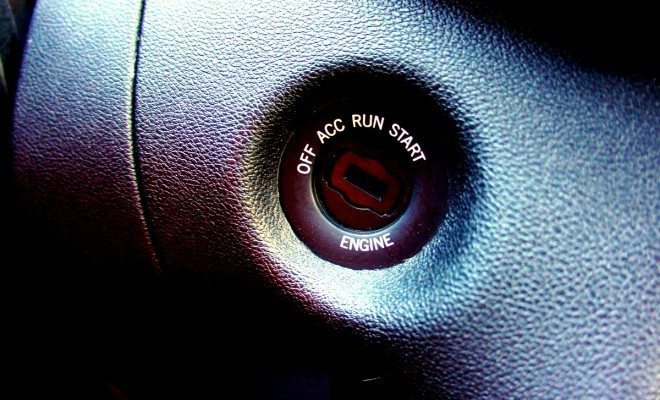 Image courtesy of [Michael Shaheen via Flickr]
Image courtesy of [Michael Shaheen via Flickr]
Business & Economics
What You Need to Know Now About the GM Recall
Car companies rarely make headlines for things that they have done right, and General Motors is no exception. GM has recalled millions of vehicles since February 2014 and has been found responsible for multiple deaths. Read on to learn everything you need to know about why GM waited so long to fix a life-threatening problem, how much GM will pay to fix said problem, and why you might want to get rid of your keychain.
What is General Motors?
General Motors is one of the largest car companies in America. It manufactures and sells ten brands of cars including Chevrolet, Buick, and Cadillac. GM sold more than nine million cars globally last year.
Why did GM issue a massive recall?
A faulty switch on the ignition of some cars would, when pressed, jiggled, or bumped a certain way, turn the key to the “off” position while driving. This would turn off power steering, power brakes, the engine, and all airbags. Drivers would effectively lose control of their vehicles. Even just a heavy keychain could be enough to set off this chain of events.
How bad was this problem?
Really bad. So far, GM has attributed 13 deaths to the faulty switch problem. That’s the largest number of auto deaths related to a recall since 2000. Rep. Diana Degette (D-CO), a ranking member of the Subcommittee on Oversight and Investigation, believes that there may be as many as 100 deaths associated with the faulty switch.
Sadly, according to the report below from Bloomberg News, many of the victims were teenagers. This might be because the cars impacted were entry level vehicles that parents often buy for their kids.
GM has recalled 25.68 million vehicles this year. This is a massive number of impacted cars. To put that number in perspective, it’s equivalent to two years of the company’s output and it surpasses the average total recalls for all car companies per year.
How long has GM known?
This is the truly weird part of the story. General Motors has known that the problem existed in at least one of its cars since 2001. During pre-production of the Saturn Ion, engineers noticed the ignition problem and fixed it; however, the problem popped up again in 2004, this time in the Chevrolet Cobalt. This time GM did not fix the problem, saying the solution was too expensive. Instead, GM sent a memo to dealerships warning them of the problem and telling them to advise customers to remove heavy keychains. GM did not recall these vehicles or inform owners of the problem until 2014.
Watch Consumer Reports explain why this is such a big deal and why GM should have recalled the vehicles ten years ago.
An internal report shows that in 2006 a solution was proposed that cost nothing. The ignition switches would merely be replaced with a stronger spring that would be more difficult to accidentally turn. It’s unclear why GM did not make this change. Other reports state that the fix would have cost less than a dollar per car. Total retooling costs would have been $400,000. Apparently this was too much money for GM to spend.
GM not only knew that this problem existed, but the company also knew that people were dying as a result. The first death linked to the faulty switch took place in 2005. Sixteen year old Amber Rose died when the airbags did not deploy in her Chevy Cobalt.
The National Highway Traffic Safety Administration (NHTSA) is also reporting that GM withheld information that may have allowed the agency to investigate and discover the problem earlier.
How do I know if my car has been affected?
GM has been sending notifications in the mail to every GM owner, but you can also check this website.
Still, you should be wary even if the model you own has not yet been recalled. GM did not recall every broken car at once. Instead, the recalls have been coming out gradually since February as the company figures out which cars are impacted. You should remove anything heavy from your keychain if you own a GM car.
How much will this cost GM?
It has already been very costly. The huge number of recalls will absolutely result in a steep loss. GM has also announced that it will compensate victims and their families. Families will receive a minimum of $1 million, plus $300,000 for every surviving spouse and dependent.
Watch Kenneth Feinberg, Administrator of GM Compensation, explain how the company will distribute these funds:
In addition, GM has paid a $35 million civil penalty, the maximum for such a penalty, to the NHTSA for failing to quickly respond to the problem.
There are also bizarre stories developing about different incidents caused by these faulty ignition switches that GM will have to pay for. For example, a Texas woman who pleaded guilty to negligent homicide in 2004 after she crashed her Saturn Ion and killed her fiance, is now suing GM. NHTSA recently confirmed that the accident was caused by the faulty switch, and not by the driver’s negligence. GM could be in serious trouble if people who have been convicted of felonies can prove that the auto company was actually at fault. Expect similar lawsuits to pop up.
There is a loophole, however, that would allow GM to avoid liability for these accidents. You may remember that GM was bailed out by the federal government in 2009. What you may not know is that this bailout created two companies: old GM and new GM. New GM took the best assets from old GM and left the bad ones behind. This could mean that new GM would not be liable for any accident taking place before the new company was formed. U.S. Bankruptcy Judge Robert Gerber will decide whether or not new GM is responsible for the mistakes of old GM.
In addition to recalls, how else has GM responded?
Mary Barra, who became CEO a month before this scandal broke out, has fired 15 employees over the recall failure.
Barra also publicly apologized multiple times. She has apologized at Congressional hearings, in press releases, and in a video produced by GM.
Conclusion
GM was at best negligent and and worst greedy when the company waited more than a decade to address this fatal flaw in its cars. Congress will investigate to see how this situation could be prevented in the future. In the mean time, check the recall list to see if your vehicle is affected.
Resources
Primary
General Motors: Internal Investigation
Additional
General Motors: GM Delivered 9.7 Million Vehicles Globally in 2013
The New York Times: 13 Deaths, Untold Heartache, From G.M. Defect
Politico: GM Will Compensate for Ignition Switch Deaths Starting at $1 Million
CNN: GM CEO Barra: ‘I Am Deeply Sorry’
Wall Street Journal: GM Fires 15 Employees Over Recall Failures
General Motors: Ignition Recall Safety Information
NPR: Timeline: A History of GM’s Ignition Switch Defect
CBS: Why Didn’t GM Fix Faulty Switches? A Per-Car Cost of Less Than $1
Wall Street Journal: GM Says it Has a Shield From Some Liability
Motor Trend: The GM Recall Crisis–A Matter of Confidence
U.S. News & World Report: Where Were GM’s Ethics?
Fortune: GM’s Recall Scandal: A Scorecard on CEO Mary Barra








Comments